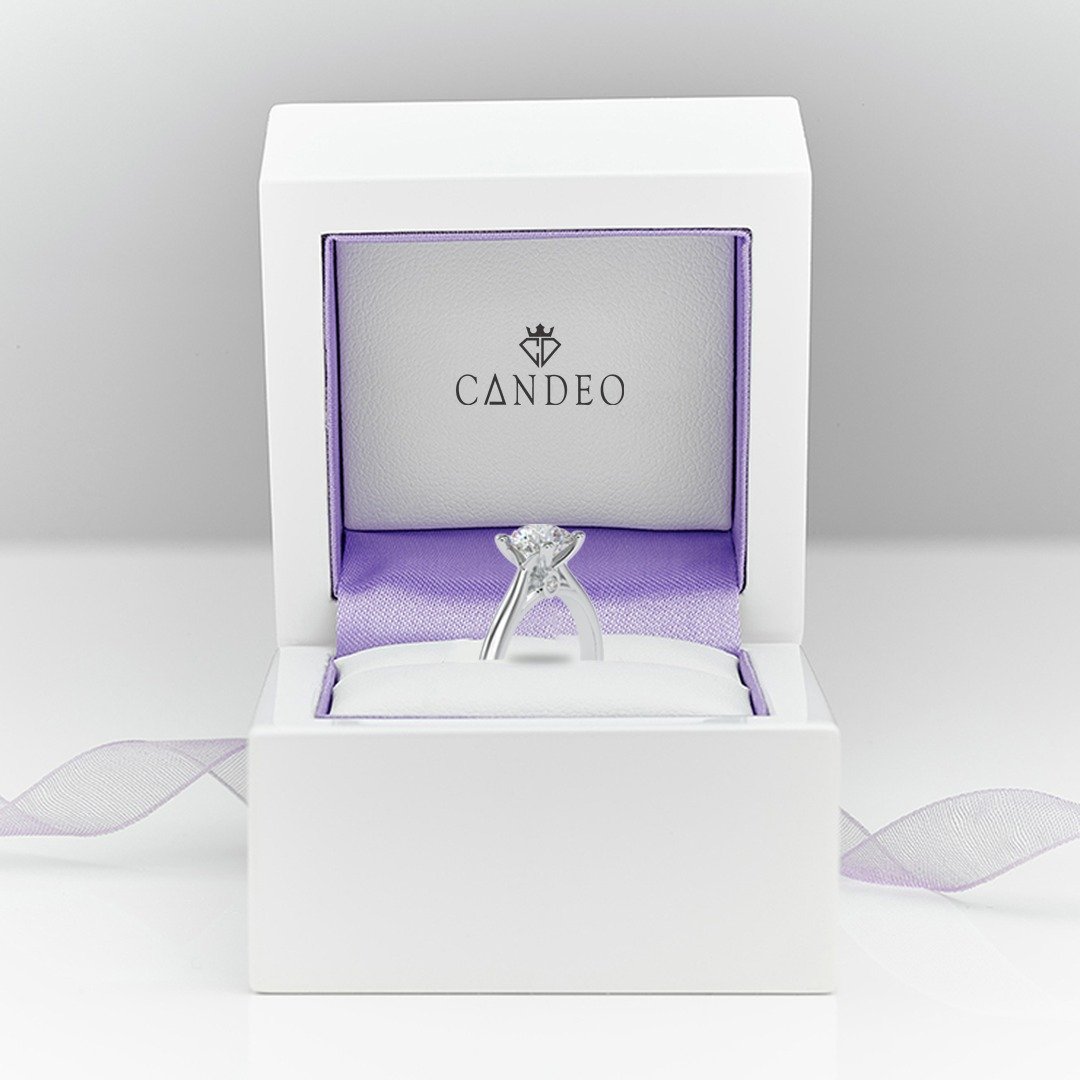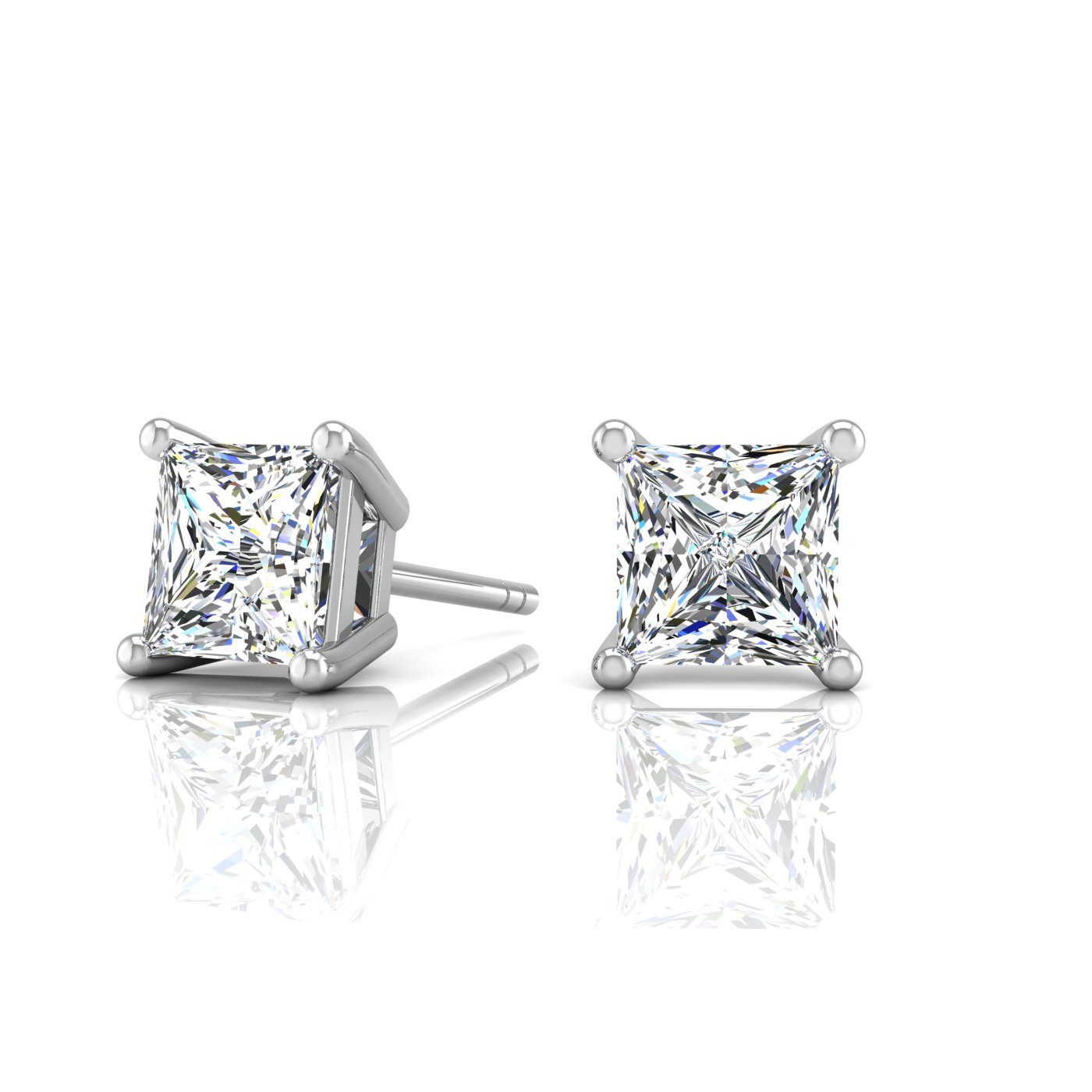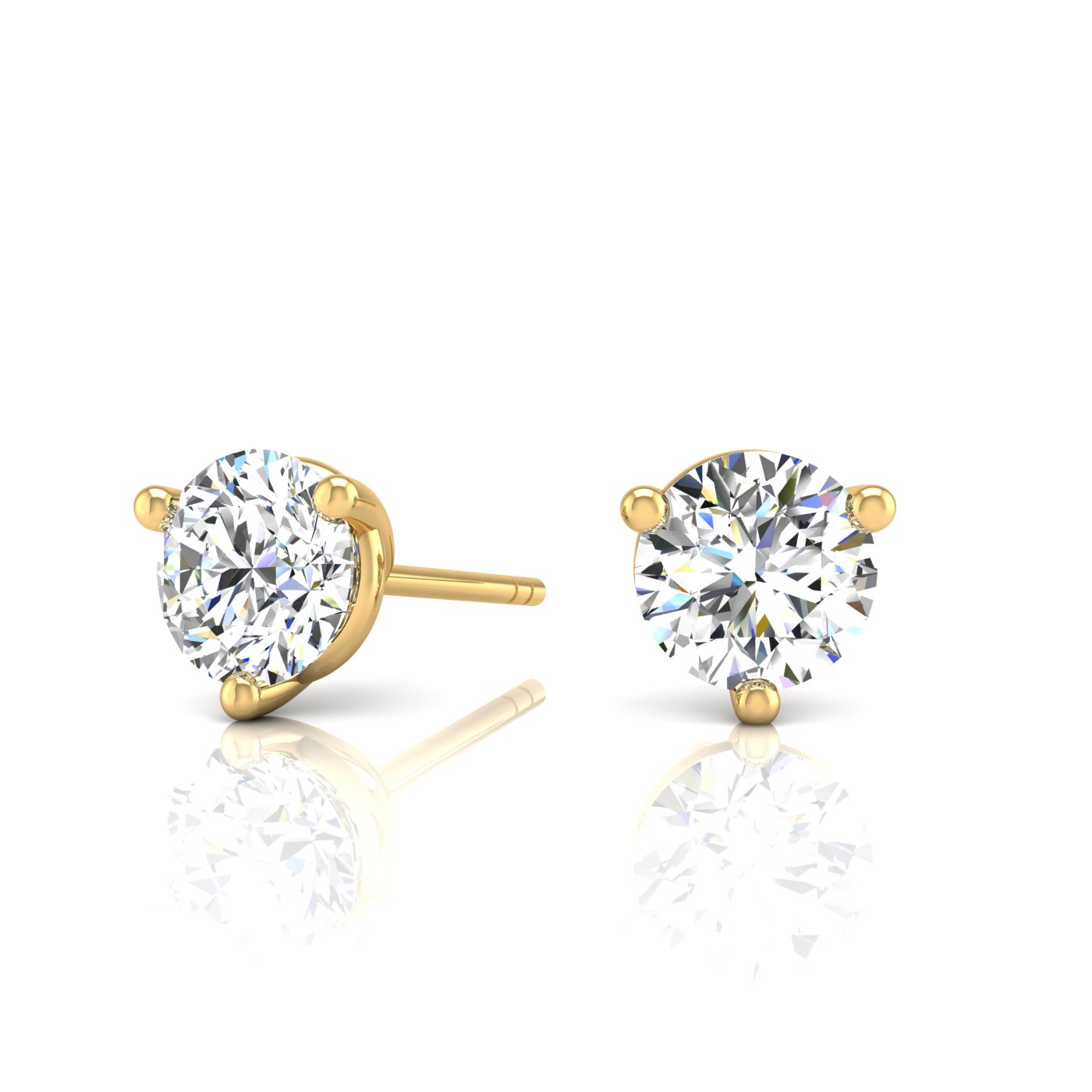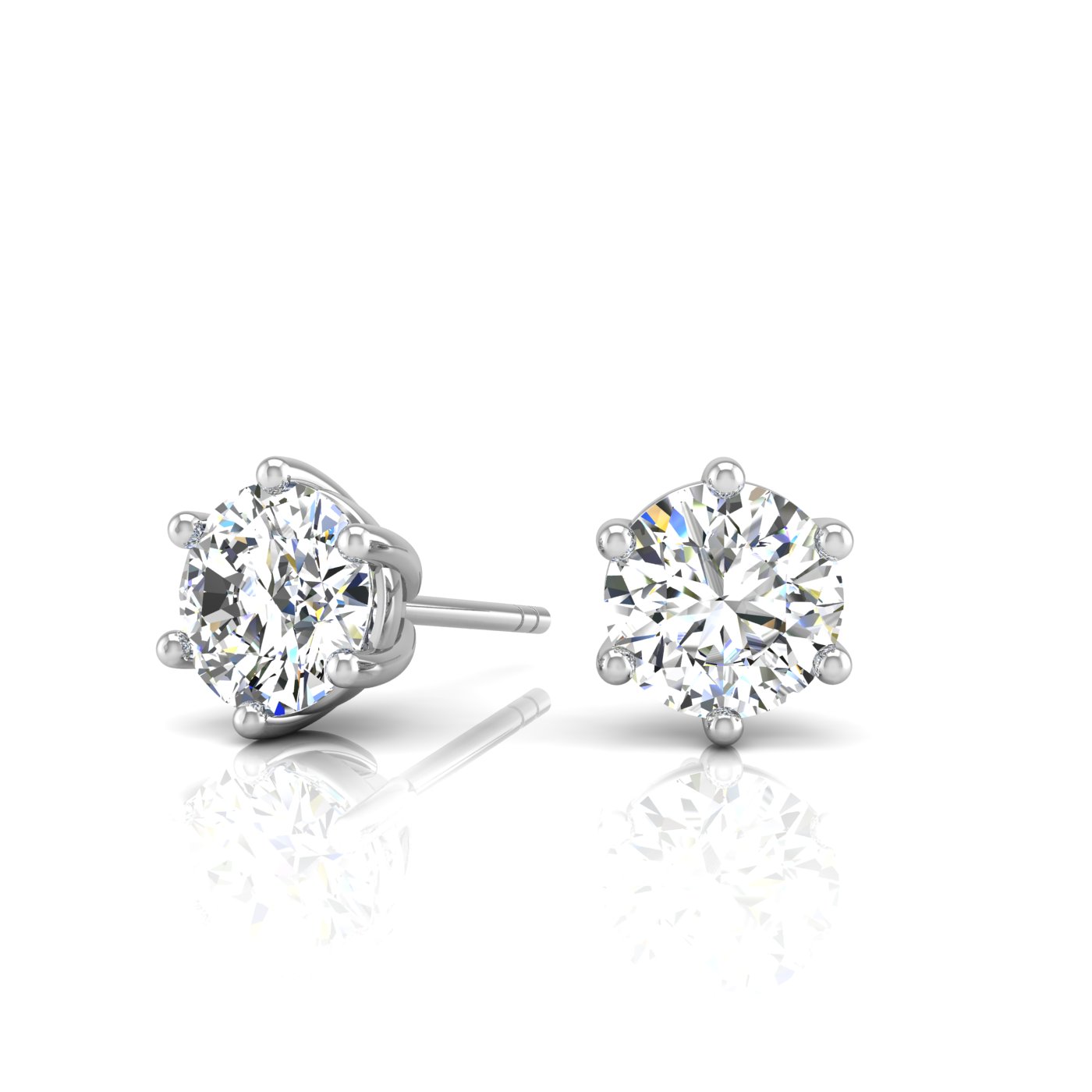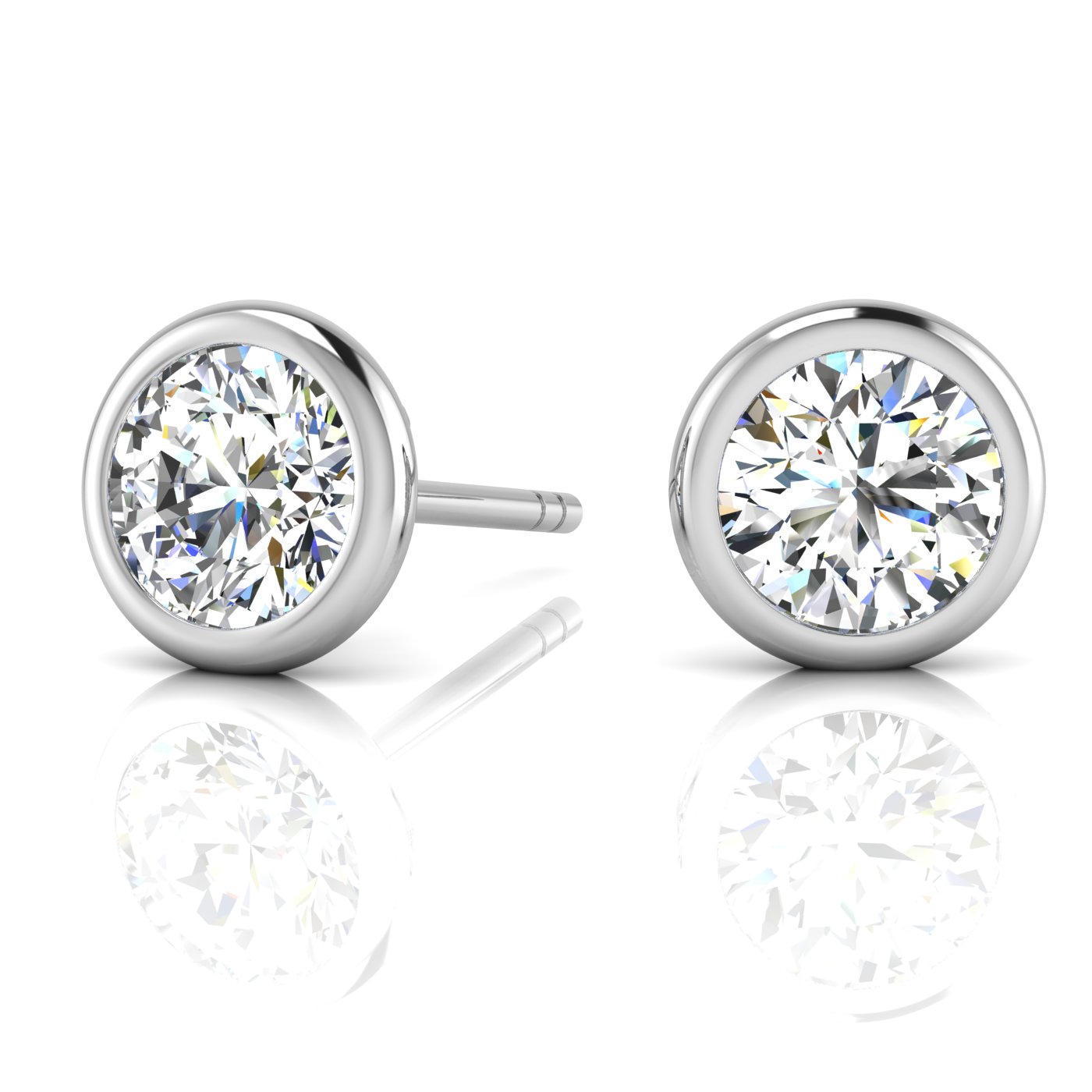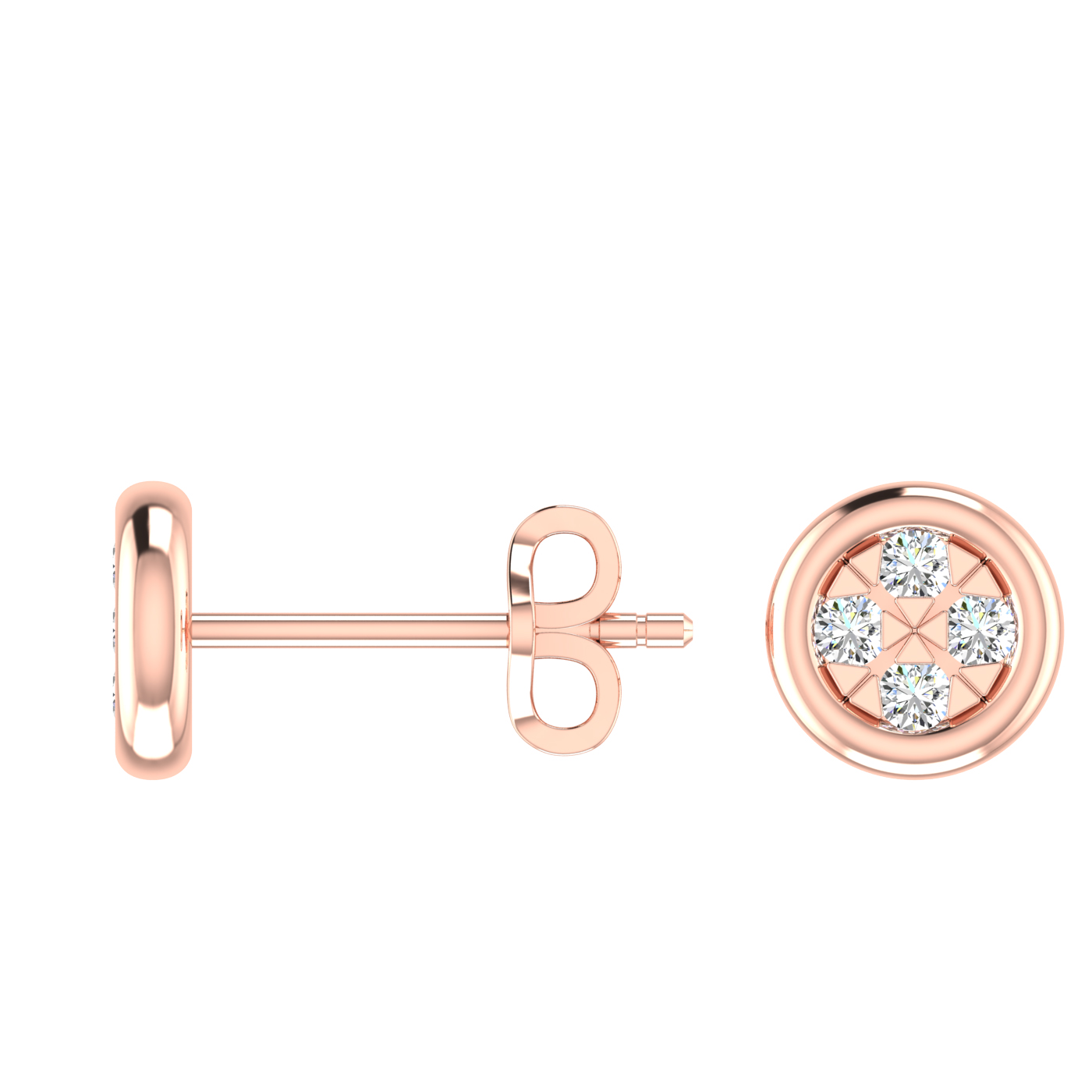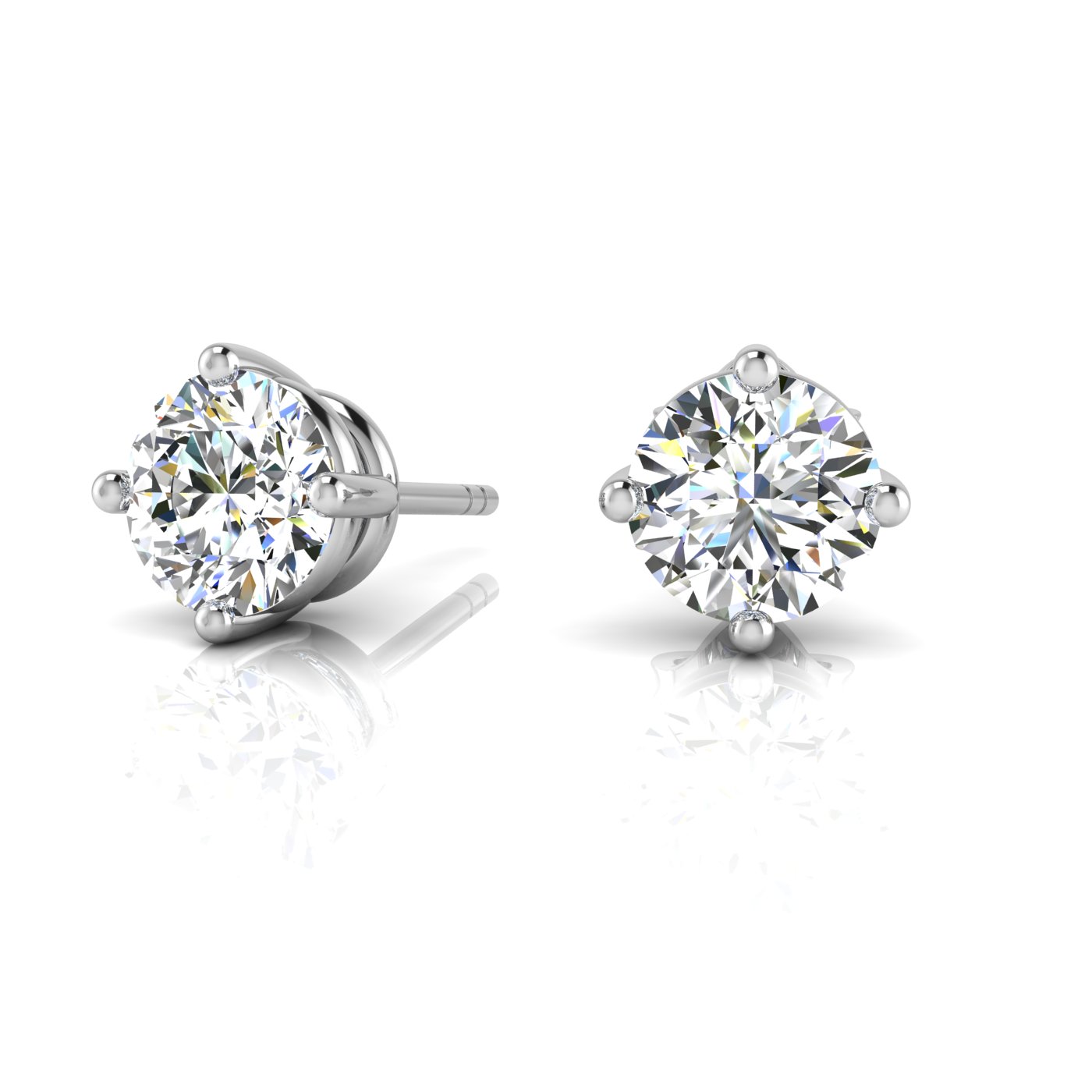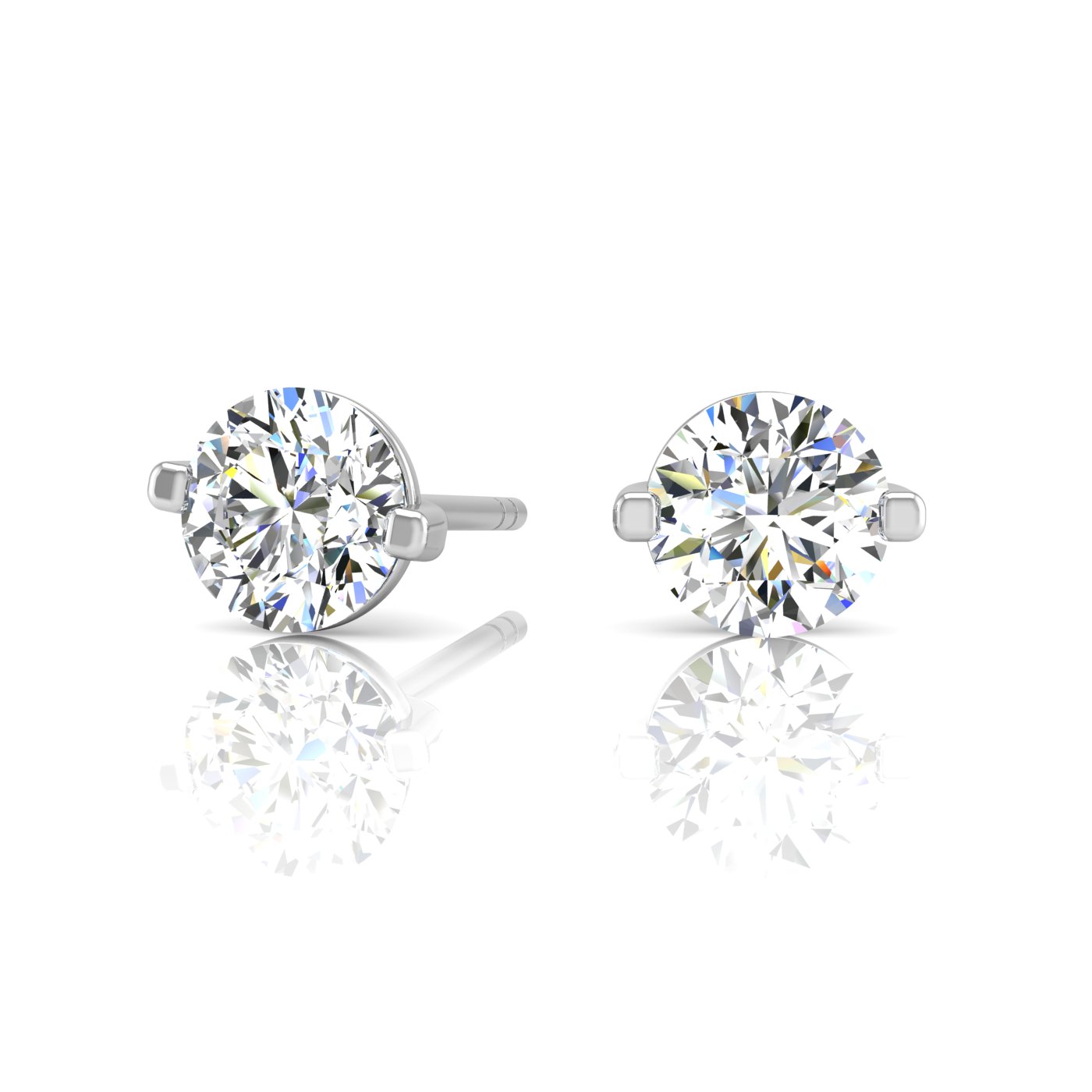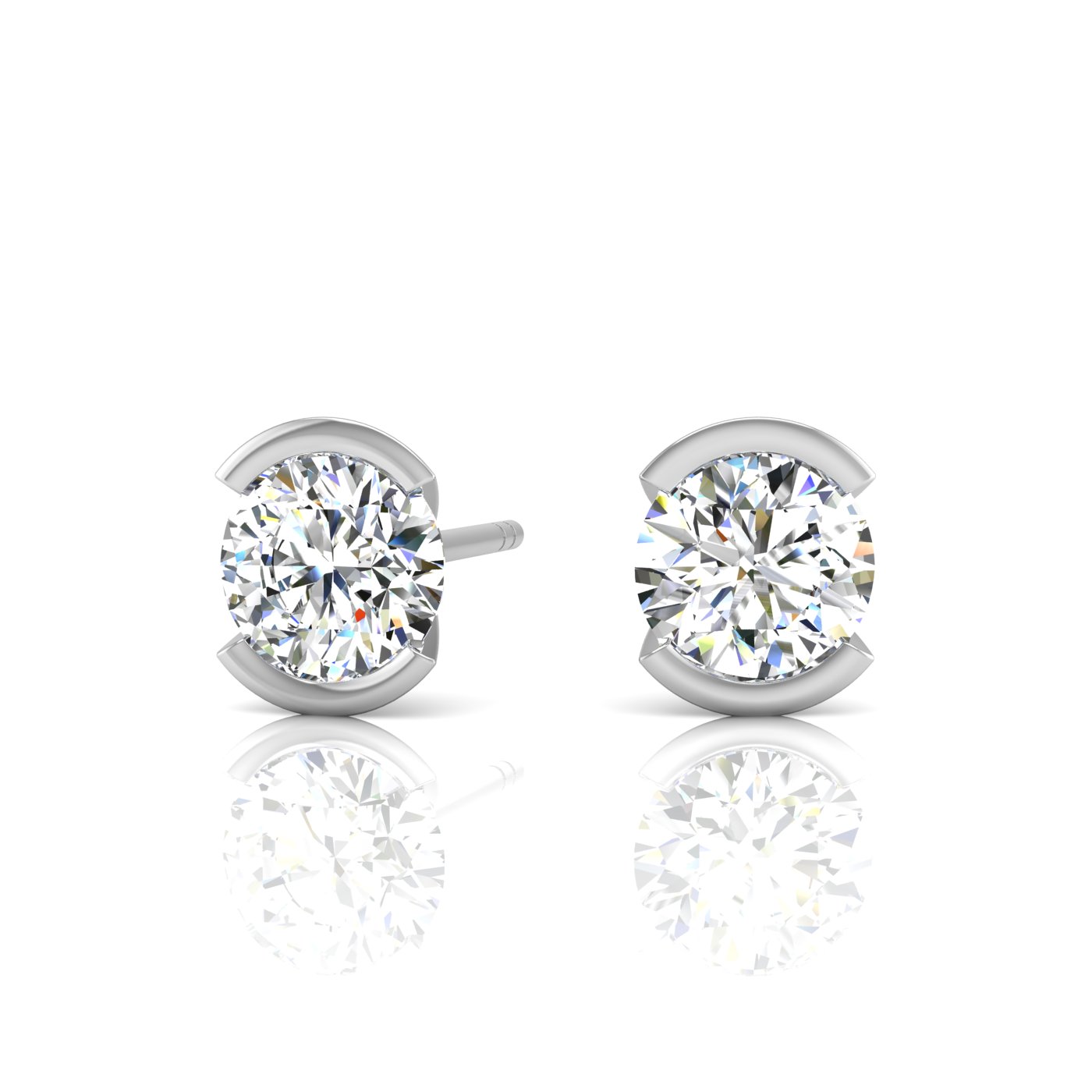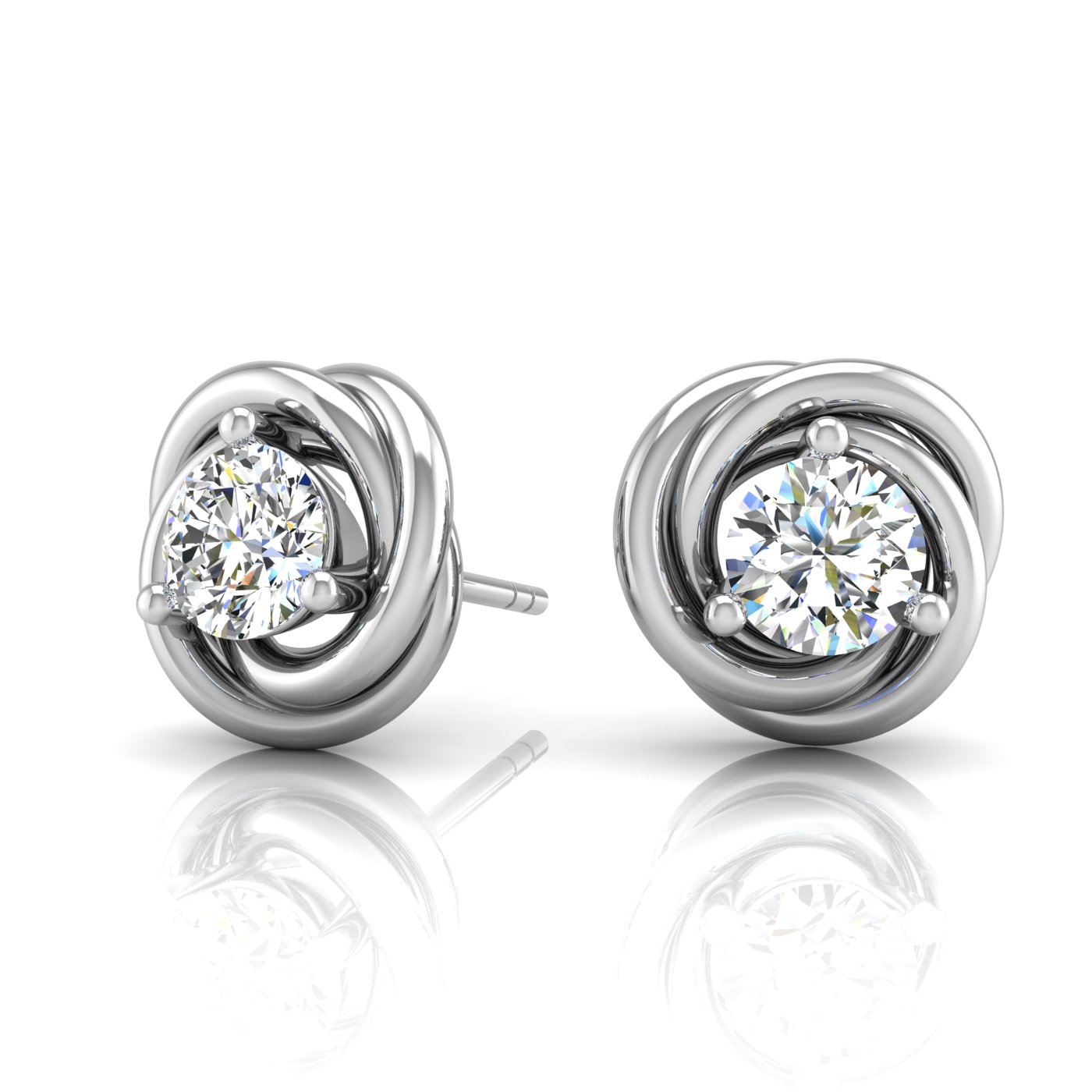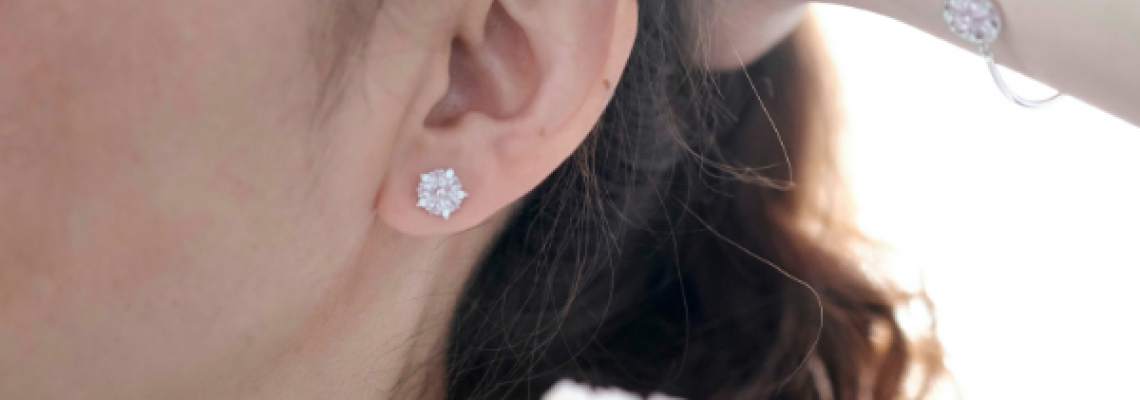
Studs are the smallest and most basic form of earring style, consisting of a diamond, gemstone, or metal ball that appears to float on the front of the earlobe. The stud is fixed to a post that goes through the ear and is secured with a screw or slip-on back. The stud earring's classic style makes it an excellent choice for almost every outfit.
The most popular diamond cuts are princess and round solitaire studs. Since these types are so common, you'll have no trouble finding them at any of the best places to buy diamond stud earrings. Diamond studs can be found in many of the traditional diamond shapes, but these are less widely used as stud earrings. Square and circular cuts are symmetrical from any angle, making it much simpler for a jeweler to pair two identical stones. Cuts such as heart, oval, pear, or marquise settings, on the other hand, can only be worn in one way, leaving you wondering whether the earring has rotated to an unsuitable position. It is also more difficult for jewelers to find similar cut stones because they are less in demand and can be more difficult to cut.
When selecting a setting for your diamond studs, you must consider the stone's protection, the beauty of the diamond, and, of course, your personal taste. The diamond is held in place by the setting, which is a component of the studs.
Most Popular Diamond Stud Setting
1. Prong Setting
Prong settings have three to four claws that hold the diamond in place. While prong settings may make a diamond appear larger since there is no metal encasing it, the stone is also more prone to falling out or being destroyed.
2. Bezel Setting
A bezel setting, as opposed to a prong setting, is one in which a metal band completely or partially surrounds the diamond, securely holding it in place. If you value safety, a bezel setting is the way to go. Bezel settings have a more traditional appearance and are frequently seen on vintage diamond earrings because they are a more secure way of setting a diamond. One disadvantage of bezel settings is that they obscure the diamond's visibility and can make it appear smaller. Aside from these, there are also setting shapes to consider. These are frequently referred to as setting styles.
Backing Styles
When it comes to purchasing diamond stud earrings, most people overlook this factor. What type of earring backs should you choose, and which provides the most protection for your studs? The last thing you want is for your carefully selected and costly studs to fall out of your ears and become lost!
Butterfly backs
These are the most common type of earring backs, with a smooth post and a small notch near the end. This notch holds the earring nut, which slides easily up and down the post when putting on or taking off the earrings. The main disadvantage is that the nut can become loose over time due to wear, and the tension that holds the nut firmly behind the ear can be lost. Keep in mind that no earring backing is completely secure, and there is always the possibility of the backing falling out.
What if I don't have enough budget to buy diamond stud earrings?
Synthetic diamond stud earrings are a great alternative to natural diamond stud earrings. It is important to note that synthetic diamonds are not the same as fake diamonds. They only differ in the manner in which they are formed, i.e. in a lab rather than in nature over millions of years.
Another option is to choose a different stone, such as a moissanite, which has the appearance of a diamond but does not have the high price tag.
Check out these moissanite stud earrings. They sparkle as brightly as diamonds and can't be distinguished simply by looking at them. It is important to note that moissanite is more than just a diamond substitute. It is a gem in its own right.

-749x747.jpeg)
